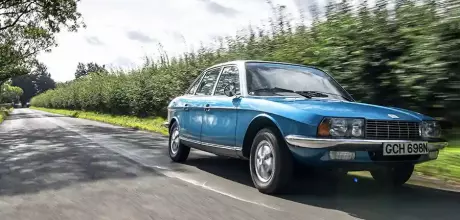1974 NSU Ro80
Pete Adams is an engineer. We arrange a drive in an NSU Ro80 that engaged his brain as much as his senses.
Words JAMES PEENE
Photography STUART COLLINS
The List Pete Adams likes unusual cars — so we put him in a clutchless, rotary NSU Ro80.
Reader Pete Adams relearns everything to drive NSU techno-wonder
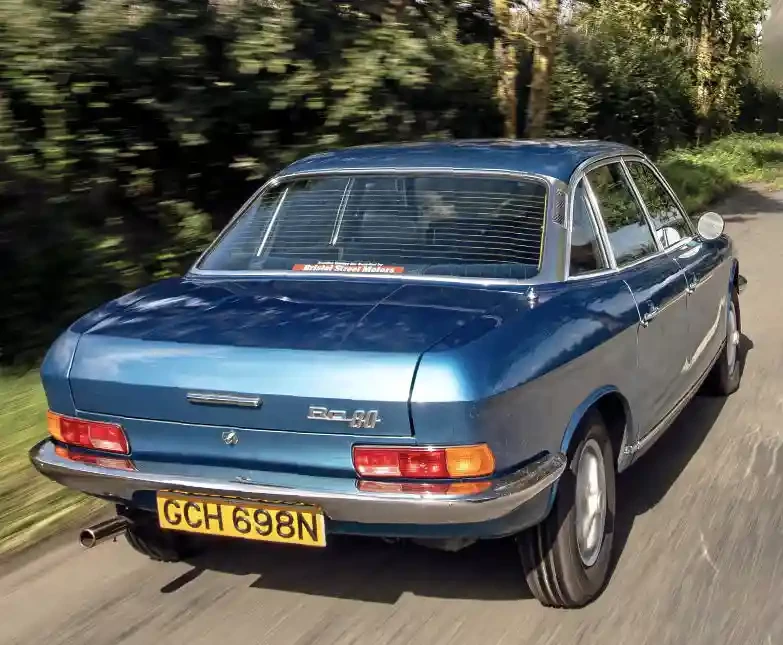
Pulling up at Phil Blake’s house, I’m met by a smorgasbord of rotary engine machines – including the 1974 NSU Ro80 that we’ve arranged for CC reader Pete Adams to drive today – plus an American cop car and the Primrose Yellow Triumph Stag that Pete has driven down to get here. What strikes me first is his eagerness and self-restraint – he arrived yesterday to meet up with Phil but resisted the temptation to drive the NSU before I got there – and second, just what an odd-ball choice the Ro80 was for buyers in the Seventies. And for that matter, today.
‘The first time I ever saw one of these I was at school,’ explains Pete. ‘To put the NSU into some form of context, at the time my father was driving a Vauxhall PB Cresta, later a Humber Sceptre – and this looked like something from another planet. It stuck in my mind because it really was such a radical thing.’
I meet owner Phil as he wheels a jack back into his workshop. Having noticed one of the tyres was looking a bit flat he’s swapped the Fuchsfelge wheels – or Fuchs as we Limeys tend to call them – for another set in his inventory. It’s a good thing he specialises in these quirky German machines or our day might well have ended before it even began.
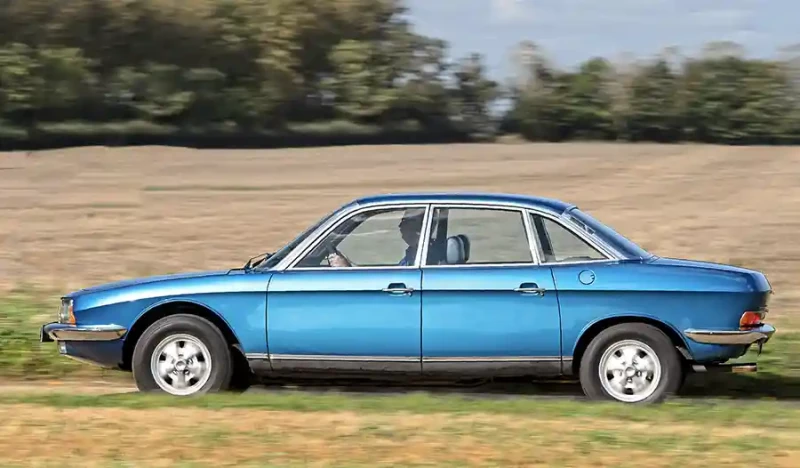
It’s also good to have the Stag with us because it helps illustrate why the Ro80 wasn’t the huge hit in the UK it arguably deserved to be. While the Ro80 was hailed as something of a wonder car at launch – scooping the European Car of the Year Award in 1968 – both subsequently went on to be much maligned by the motoring press for factory installed mechanical issues. What sets the Triumph offering apart – and helps explain why it sold in far greater numbers than the Ro80 – is that there was nothing in any way exotic about it. The Stag is as familiar to us Brits as meat and two veg. Any backstreet mechanic would have been happy to whistle through his teeth as he popped the bonnet on a malfunctioning Stag. However, as Pete says, ‘The rotary-engined Ro80 was – and still is – an entirely different proposition. It didn’t take long for it to be regarded as complex and unreliable, with an unquenchable thirst for oil when it was new, and sadly that’s a reputation that it’s carried forward as those that survived achieved classic status.’
Even so, Pete is impressively unfazed by the NSU. After exchanging pleasantries and talking about how the day will unfold, Phil asks Pete if he wants him to reverse the NSU out for him. Pete declines, ‘It’s okay, I’ll do it’ he says, jumping in the driver’s seat and carefully threading this pristine example down the narrow track to Pete’s garage – ditch on one side, line of project cars the other. He’s keen to get cracking.
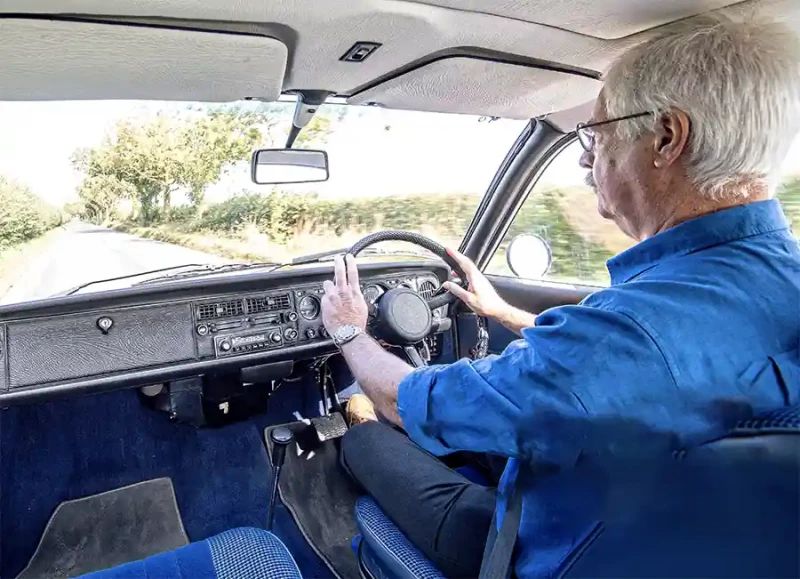
Phil hops in the passenger seat as Pete breaks his Ro80 cherry. As with all bona fide classics there are a couple of quirks peculiar to the model that require some explaining, not least the way you change gears. All Ro80s were equipped with a three-speed Fichtel and Sachs semi-automatic gearbox that uses a vacuum servo-controlled clutch. This novel set-up is much the same as Porsche’s old Sportomatic system or a Volkswagen Autostick, where you’re tasked with stirring the cogs yourself but there’s no clutch pedal. ‘The clutch is operated by a microswitch on the gear lever, so the moment I place my hand on it the vacuum-operated system thinks I want to change gear and engages the clutch,’ explains Pete. ‘It’s a really clever system that is soon learned, it’s just a matter of changing your driving habits and is something I’ve no doubt I’d get used to after a bit more time behind the wheel. As it is, I occasionally catch my hand heading towards it while I’m driving before I remember it’s best to leave it alone unless I actually want to change gear or the car will start shuddering and getting upset. I have to confess that I’m not an intrinsic fan of automatics. I much prefer driving a manual so I’ve only ever had one automatic in my life and that was a Corvette, which is markedly different from this.
‘With the NSU there are different sorts of disciplines that need to be learned with it. From a safety viewpoint, I don’t want to make a bad mistake – I’ve tucked my left foot right up against the seat so I’m not near the brake with the wrong foot. It’s just a matter of calibrating myself to the car.
‘Visibility is great. The beauty of old cars is that there’s a huge glasshouse. It has elegant, slim pillars, and plenty of details to admire. You can’t see any rain gutters – they’re hidden by all that delicate chrome trim, which also helps with the aerodynamics. It has fantastic attention to detail everywhere you look at it.
‘With it being front-wheel drive, it’s really spacious, it has a flat floor with acres of room inside. It’s not small but it certainly doesn’t feel like a big car to drive either, which is strange and when you consider where it was positioned in the market. When the Ro80 was new NSU was pushing for prestige sales. I think it was more than the comparably refined 2.8 XJ6 [which actually had a starting price of £1797 against the NSU’s £2444] and into the lower reaches of Mercedes territory and well into BMW prices. It was a proper up-market car and aiming high, but you can see by all the details that the intrinsic quality is there’.

It’s at this point that Pete reveals he’s an engineer – with an interesting side-line in restoring WW2 aircraft cockpit lamps – and that goes some way to explaining why the NSU holds such a fascination for him. ‘I’m interested in good design and engineering,’ he says. ‘I’m really impressed by the Ro80. It’s sprightly and has a really supple ride to it. The power steering is nice. It’s not too twitchy. And it really wants to rev. It wants to go. It’s a bit of a change compared with a normal piston engine – this is something you know wants to rev higher and higher so it’s a battle between showing some mechanical sympathy and exploring what the engine can do. It’s willing but absolutely requires a different mindset to drive it and get the most out of it. ‘On these roads there are some fairly big dips and undulations, but it drives very pillow-like and feels supple – not bouncy and floaty – and feels well glued to the road.
‘It takes a bit of calibration to what I’m used to with regards to its steering, but it’s just the way the car is engineered. It requires much less input to make it go where you want to point it. It’s easy to give it excessive inputs at first, but again, it’s something I’ve quickly adjusted to. Overall, the car has a lovely feel.’ Styled by NSU’s head of design, Claus Luthe – who also had a hand in various BMWs plus VW’s unloved K70 and its better received MkI Polo – the Ro80 still looks like something ahead of its time, much like the Citroën DS.
Debadged and shown to someone who’d never been exposed to the type before, they might think it was of Italian origin, or perhaps French. Certainly not anything produced in the Germany. Would it be stretching things to suggest there’s a hint of Seventies Alfa Romeo styling on the exterior? Perhaps, but the more subdued interior with its black plastic dash certainly feels more Germanic.
At this point, the engineer in Pete bubbles to the surface again. He’s clearly genned-up on his facts before his drive, ‘It’s a really slippery shape endowed it with a low drag coefficient. I think I read that it’s something like only 0.35’.
The NSU and the Stag are entirely different animals and yet after enjoying positive reviews at launch, both went on to suffer a similar pummelling by the automotive press as reliability issues later became apparent. As Pete laments, ‘The Stag was appalling in terms of quality. It was built by British Leyland that was pulling itself to pieces at the time and while I’m not saying they’re in the same league, both were hit by lack of experience with the engine designs. I’m sure the NSU had a great deal of development, but the Triumph engine was a new oneoff that wasn’t developed properly.
Stags weren’t put together well and the people dealing with both of them didn’t have the knowledge or experience. Lack of understanding and proper specialist care affected the Ro80 most. On the NSU, things famously go wrong with Wankel engine, there are problems with the seals and heavy oil consumption, and the fuel crisis of 1973 didn’t help its cause either. Suddenly people didn’t want thirsty cars – combine that with high price and a tainted reputation and you’re in trouble. Thankfully there are people like Phil around who know the foibles and what can be done to rectify them. They can be made very reliable now, as this example shows.
‘If I had a lottery win there would certainly be one of these in my garage. It’s just so different and that’s what’s attractive. On the dream drive list I submitted there were no Lamborghinis, Ferraris or any typical poster cars. I admire them, but I’m fascinated by this from an engineering point of view. I’ve always been a petrolhead and this is so exciting because it’s so different. ‘As much as I love big V8 engines and cars like Aston Martins, this is so intriguing, and it certainly doesn’t disappoint’.
I ask how it felt climbing out of the Stag and into the NSU. ‘The Stag is totally different’, says Pete. ‘It’s no sports car, it’s a cruiser.
It encourages you to be gentle with it and it’s at its best cruising along, but can get a move on if you want to. By contrast, the NSU wants to fly. It wants to go fast all the time and feels so precise, while the Stag feels a bit mushy. It’s a case of getting used to the different characteristics these cars have. This is riddled with interesting engineering facets. It was so ahead of its time. Front-wheel drive, with inboard front disc brakes that are actually very good at stopping it. This is obviously a fairly well-specced one with the Fuchs alloys and the headrests and sunroof.
‘The other thing I notice about driving it, having had quite a few motorcycles in my time, is that it’s almost like driving a two-stroke. The rotary engine just wants to spin all the time and there’s no real sensation of engine braking.
‘I’m delighted I got to experience it and it definitely keeps its place in the fantasy garage.’
A day or so after our spin in the NSU I receive an email from Pete, ‘Phil gave the Stag a revenge test after you left. At my insistence, he pushed it pretty hard and I was quite proud of how it responded and behaved. The temp gauge never went beyond normal. Not what the doomsayers would have predicted…’
The Ro80 intrigues Pete enough to keep its place in his dream garage.
TECHNICAL DATA 1974 NSU Ro80
- Engine 995cc twin-rotor Wankel rotary, single Solex 32DDI TS twin-choke carburettor
- Max Power 115bhp @ 5500rpm
- Max Torque 121lb ft @ 4500rpm
- Transmission Three-speed, semiautomatic with torque converter, front-wheel drive
- Steering ZF power-assisted rack and pinion
- Suspension Front: independent with MacPherson struts. Rear: Semi-trailing arms, coil springs, telescopic dampers, anti-roll bar
- Brakes Front: power-assisted four-piston ATE inboard discs; Rear: discs
- Weight 1220kg (2688lb)
- Performance Acceleration 0-60mph: 13.1sec
- Top speed: 112mph
- Fuel consumption 18.6mpg
- Cost new £2444 (1970)
- Classic Cars Price Guide £4000-£13,000
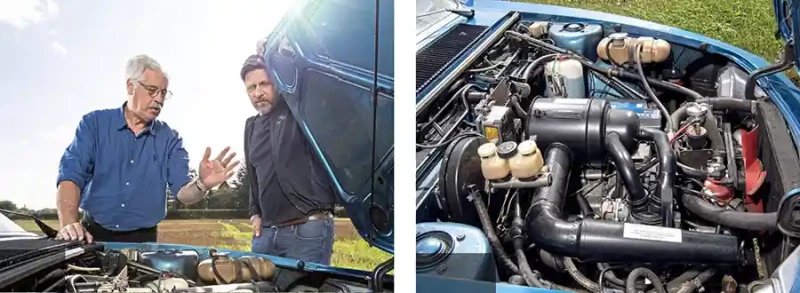
Engine bay gives engineer Pete plenty to fawn over 1.0 Wankel’s free-spinning nature contributes to the car’s keen character.Pete explains his Ro80 fascination to writer James.


